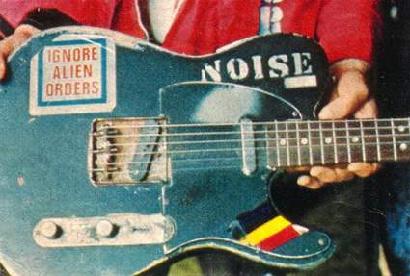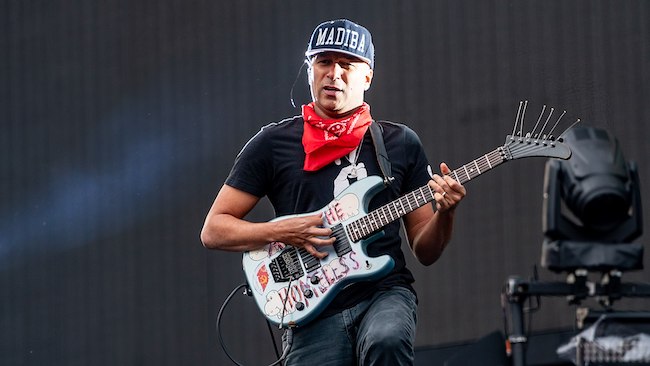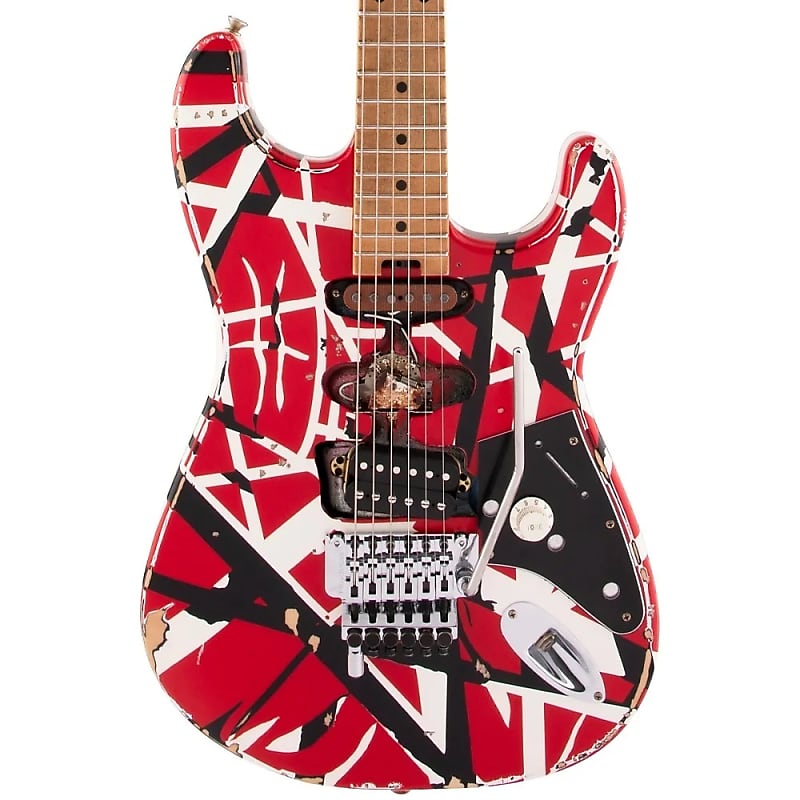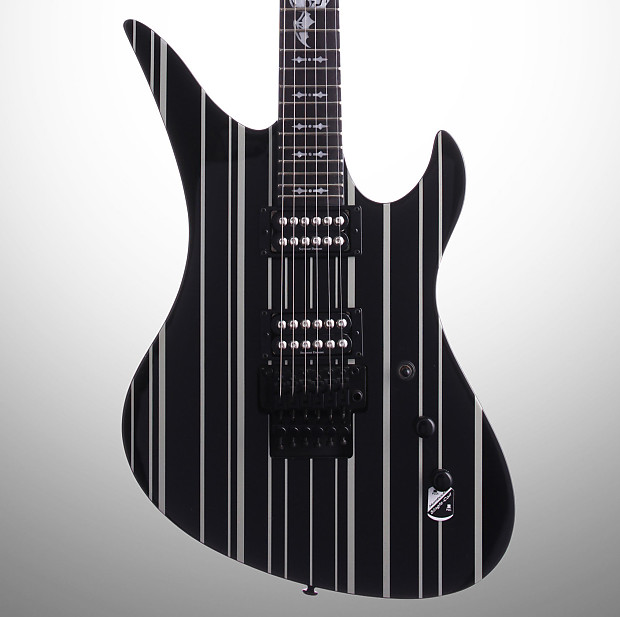A guitar is not simply an object, it's a means of self expression—which is the reason you play it your own way. It's why you create your own tone, conjure your own sounds, make your own style. And it's why some guitarists take the idea of self expression beyond their sound and into the look of their guitars.
The trend to decorate your own guitar—or, for the well-heeled, to have your guitar decorated for you—developed rapidly back in what historians have come to term The First Psychedelic Era. Many will remember some of the most famous examples from that period, like Jimi's Monterey Strat, Eric's Fool SG, or Jimmy's Dragon Tele.
Paul McCartney summed up the zeitgeist: "I got out the old aerosols," he told me about decorating his Rickenbacker bass in 1967. "We did the cars, too. If you did the cars, you might as well do your guitars. It looked great, and it was just because we were tripping. That's what it was, man. Look at your guitar and you'd trip even more."
These psychedelic creations set the scene for the paint that's flowed ever since for players who want to personalize their axes and stamp their identity on an otherwise mass-produced item.

Come the '70s, Clash main man Joe Strummer pounded out his contributions on a bashed-up Tele while his pal Mick Jones did the rest on a few Gibsons. Joe bought his '66 sunburst Tele secondhand in London for £120 in 1975, when he was in a pub-rock band called The 101ers. He joined The Clash the following year and took his guitar to a car body shop, where he had it painted black over a grey undercoat.
Then Joe decorated his freshly black Tele, most famously with an "Ignore Alien Orders" sticker and a "NOISE" stencil. He played it until The Clash split in the mid-'80s, and it was a fine example of shoving on a new, more suitable color—because a pretty sunburst is So Not Punk—and then tipping in some whacky decals.
Woody Guthrie might not have been the first to adorn his guitar with stickers, but he was surely among the earliest to craft a handmade one with a political statement. Woody's dust-bowl ballads, including "This Land Is Your Land," were touted as the voice of the blue-collar worker through the American Depression of the '30s. He embellished a few of his guitars—mostly Gibson acoustics, namely a J-45, an L-00, and an SJ—with a sticker that declared "This Machine Kills Fascists." It was a pleasing thought.

Pete Townshend took a practical approach in the mid-'70s when he found a way to identify his batch of Les Paul Deluxes with big white Letraset numbers. Letraset was a system of sheets with letters, numbers, and symbols in various sizes and fonts that could be transferred to paper, film, guitar bodies, and whatever else you wanted to label. Pete had nine of these numbered Les Pauls, and presumably it began with a clear idea that, say, Number 3 meant one thing and Number 9 something else, such as whether it had a particular capo'd tuning. By the end of a Who tour, however, all this would have become rather more chaotic. Nice try, though, Pete.
Eddie Van Halen set the bar for the homemade vibe with his Frankenstein guitars, which started life around 1974 when he bought some parts from Wayne Charvel. His aim was to cross-pollinate a Gibson with a Fender, because the amalgam he wanted to play didn't exist. So he took matters into his own hands.
Eddie achieved the unique look of his original Frankenstein thanks to layers of home-sprayed paint and some deftly applied tape. And his success in the '80s gave the notion of the shed-built guitar a massive boost of popularity. All across the land, parents were busy clearing up poorly attached necks and discarded spray cans.
Eddie's apparently haphazard decoration, a sort of criss-cross affair of white and black stripes on a red ground, highlighted a contrast that will be familiar to anyone who's considered what to do ornamentally within the confines of a guitar body. Most guitars have a body with plenty of curves. Did I say contrast? Well, why not introduce some straight lines, then? Or, in Eddie's case, make that kind-of-straight lines.
This leads us to Synyster Gates and his tasteful array of pinstripes. The Avenged Sevenfold guitarist worked with Schecter on a specific look for his signature models, and in particular he enjoyed coming up with different color combinations of horizontal pinstripes across the body of his (suitably) Avenger-based models. Gold on black was an early Synyster favorite. "I definitely wanted to go for the flash, but keep it classy," he told myguitarlessons, adding with a laugh: "Or as classy as it could be. In my eye, it had all those things. It stood out from the crowd, but it didn't look like a pimped-out '57 Chevy."
Synyster and Schecter understood that there's a fine line to be drawn somewhere between the madness of a totally over-the-top kaleidoscope and the restraint required to bring a touch of class to the business of personal decoration.
Syn's horizontal scheme targets that line successfully, and the same can be said for Buddy Guy's polka-dotted Strats, say, or Zakk Wylde's concentric circles. Buddy went for his polka dots because back in the '50s he assured his mum that he'd make his fortune in Chicago and buy her a polka-dot Cadillac. She became ill and so the car never happened, but later his famous monochrome Strat became a tribute to her.
Keep it simple, keep it geometric, and keep that contrast. For many, those are the bywords for successful prettifying of a beautiful body. Others want to celebrate a return to the laissez-faire attitude of the original First Psychedelic Era.
Joseph Arthur comes on like a keeper of the flame—who nonetheless seems comfortably at home playing regular natural-finish acoustics and sunburst electrics with Ben Harper, perhaps, or Dhani Harrison. But he has an artistic streak, too, that he allows free reign in his gloriously extravagant painted creations.

Tom Morello's fave bitser guitar rounds up many of the ideas for decorating guitars into one enthralling whole. In the '80s, he wasn't too happy with a guitar he'd bought made from parts, and he proceeded to replace everything replaceable, several times over. He ended up with a nameless graphite neck, EMG pickups, and an Ibanez Edge vibrato, but kept the original wooden body.
In the early days of Rage Against The Machine, Tom liked to draw hippos. Who doesn't? So he drew a few of those and then painted them in. Then he wrote "Arm The Homeless" on it in big letters. "I liked the juxtaposition of that kind of provocative and militant situationist slogan," he told MusicRadar, "with those four smiling hippopotamuses all facing in one direction." Woody Guthrie would have been proud.
About the author: Tony Bacon writes about musical instruments, musicians, and music. He is a co-founder of Backbeat UK and Jawbone Press. His books include Fuzz & Feedback, The Ultimate Guitar Book, and Guitars: The Illustrated Encyclopedia. Tony lives in Bristol, England. More info at tonybacon.co.uk.



